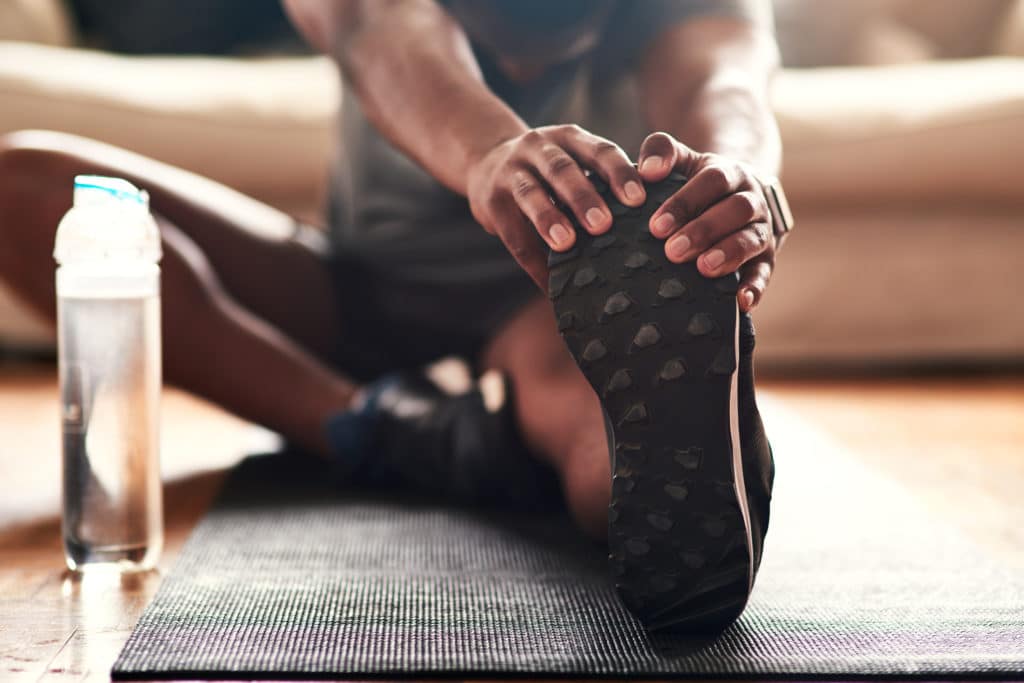You’ve heard a million times about numerous benefits of working out. But what happens if you are injured?
Whether an injury occurs during a workout, at work, or while walking down the street, you need to be extra careful about getting back into the exercise game. Meanwhile, you can do a few things to prevent the injury from happening in the first place.
Let’s look at the most common injury-related questions our trainers get. This information can help you tweak your workouts while staying out of the emergency room. For more detailed answers, you can watch a short FAQ video right here.
Injury-Related Q&A

Q: I’m recovering from a back injury, and my doctor says that I can do light exercise. What kind of exercises does that entail?
A: If doctors allow you to do light exercises, it most likely means that they aren’t worried about the injury getting worse. However, you need to avoid high-impact exercises, such as burpees, jumping sets or certain variations of push-ups. You have to start light and add intensity gradually. Eventually, you’ll to return to your pre-injury routine.
Q: How do you know if you are on the verge of injury when you start feeling a little tired?
A: It depends on your general workout intensity and tolerance level. When you are just starting, it’s important to take exercising slow. Breaks are a must. If you start feeling pain in your wrists, elbows, or knees, take a break.
Q: What are nerve glides?
A: Your brain is connected to the spinal cord that runs down your spine. Your nerves travel from your spinal cords to different parts of your body. When nerves are injured, their mobility is limited as the scar tissue builds up around them. This leads to chronic pain and inflammation. Nerve gliding is a set of exercises that frees up injured nerves and improves your mobility.
Q: What are some nutrition tips for healing?
A: Certain foods can help reduce inflammation if you are injured. They include turmeric, salmon, ginger, and leafy greens. Overall, you need to maintain a well-balanced, moderate-calorie diet that includes carbs, proteins, fats, and plenty of leafy greens.
Q: What causes soreness after a workout?
A: If you haven’t used a certain set of muscles for a while and suddenly decide to pump them during a workout, they’ll start feeling sore. You will experience delayed-onset muscle soreness.
When muscles have to work harder than usual or in a different way, it causes some damage to the muscle fibers. As a result, you feel pain and stiffness. To battle the soreness, you can use the RICE (Rest, Ice, Compression, Elevation) method to recover.
Q: Can stretching prevent injury?
A: In short, stretching doesn’t prevent injury. However, if your muscles aren’t stretched sufficiently to perform a certain set of exercises, you can get injured doing them.
Q: How can I tell the difference between muscle and joint pain?
A: If you can’t tell what hurts (joint or muscle), flex the muscle. If that motion hurts the muscle and not the joint, then it’s muscle pain. After that, move your joint without flexing the muscle (you can ask someone else to help you do it). If the pain is still there then it’s joint pain.
Q: Is it ok to work out with sore muscles?

A: It’s always important to give your muscles proper rest. Most likely, exercising with sore muscles won’t damage them further. However, it may not help you achieve the desired results. If one muscle group is sore, you may want to lighten the load on it during the next workout while focusing on other muscles.
Download Sworkit today to try our rehabilitation and care workouts. You can also take advantage of the app’s “Ask A Trainer” feature to get answers to injury-related questions we didn’t cover above.

Comment section